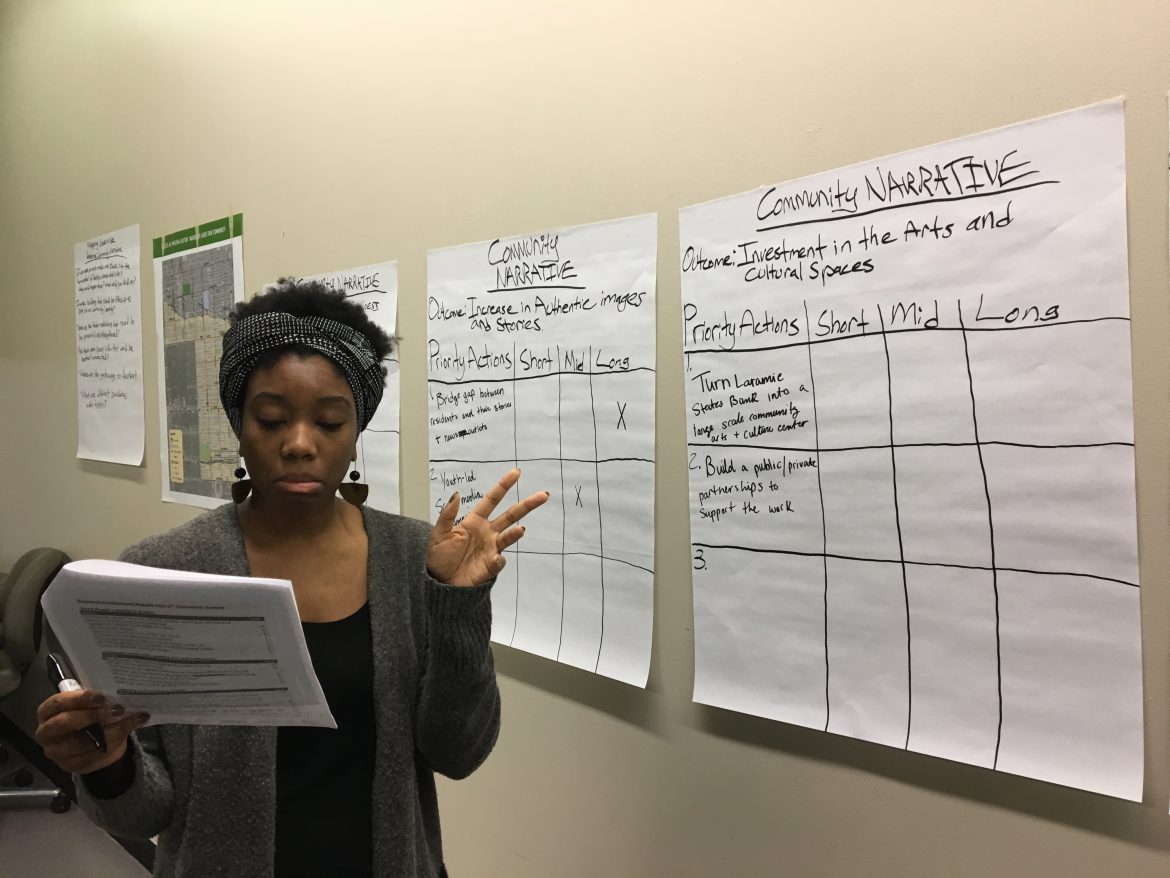There are a number of steps that should be taken to stabilize Austin’s housing market and build a greater sense of community, say several residents and West Side advocates.
Educating people about mortgages, trusts and other financial concepts would help. So, too, would making public information about who owns apartment buildings and other properties in Austin.
“The average person lacks financial literacy,” Larry Floyd said at a meeting last week of West Siders working on a year-long, quality-of-life plan being put together under the leadership of Austin Coming Together and LISC Chicago.
“We need to have better intelligence about who’s buying what,” said David Robinson, a former journalist who is the communications/organizing director for Manufacturing Renaissance.
He suggested that West Side elected officials create an information kiosk to keep residents informed of what’s happening in their neighborhood.
“It seems like they don’t want us to know about these things,” Robinson said at the March 1st meeting. “We want a better information portal.”
There are many programs available to homeowners – including one where residents can apply for up to $12,000 to weatherize their property – but not enough people know, said Sharon Hartshorn, a member of the South Austin Coalition and Friendship Baptist Church.
“Information is power. What you don’t know can hurt you,” she said.
Maria Starck, a fair housing advocate who lives on Chicago’s Northwest side, said information about land ownership in Austin could be mapped. It would still be challenging to determine ownership in all cases since some buyers create LLCs to hide who they are and how much property they’re purchasing, she said.
Earlier last week, another group of residents and stakeholders gathered to discuss two other of the seven issue areas being tackled by the quality-of-life planning process: youth and public safety.
One of the main goals of the public safety working group is reduce the rate of both violent crime as well as quality-of-life crime and build a healthy and resilient community.
Things like the murals at Lake and Central and Lake and Laramie make people appreciate the area a little more, said Hartshorn, who also attended the Feb. 26th meeting.
“There are a lot of positive things already in Austin, but . . . the information is just not being made available to the members of our community. How can we alleviate that problem?” she asked.
“I’d like to see less concrete and more green . . . more beautification,” Hartshorn said. “There are vacant buildings, boarded-up buildings, vacant lots . . . Something that really bothered me over the holidays was some of the thoroughfares were decorated in other neighborhoods, but not here. . . . I think cleanliness is a big issue in our community.”
One woman mentioned a minister who had been in prison himself years ago and made it his mission to help other ex-cons once they’re released. He would drive them in a van to get their state ID and help them in other ways get acclimated to life outside prison. But he couldn’t get a grant for what he was doing, she said.
Others asked: How do we rethink the criminal justice system? Where did we go wrong? If we divert people who commit crimes, are there enough resources in Austin to support them?
All are invited to the education working group, which will meet Tuesday, March 6 from 6 to 8 p.m. at 5049 W. Harrison St. The economic development and community narrative working groups will meet 6 to 8 p.m. Wednesday, March 7 at the same location.
For more information, call (773) 417-8615 or email jabonce@austincomingtogether.org.
